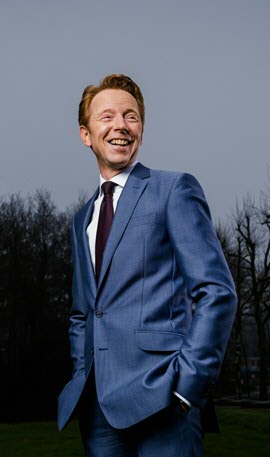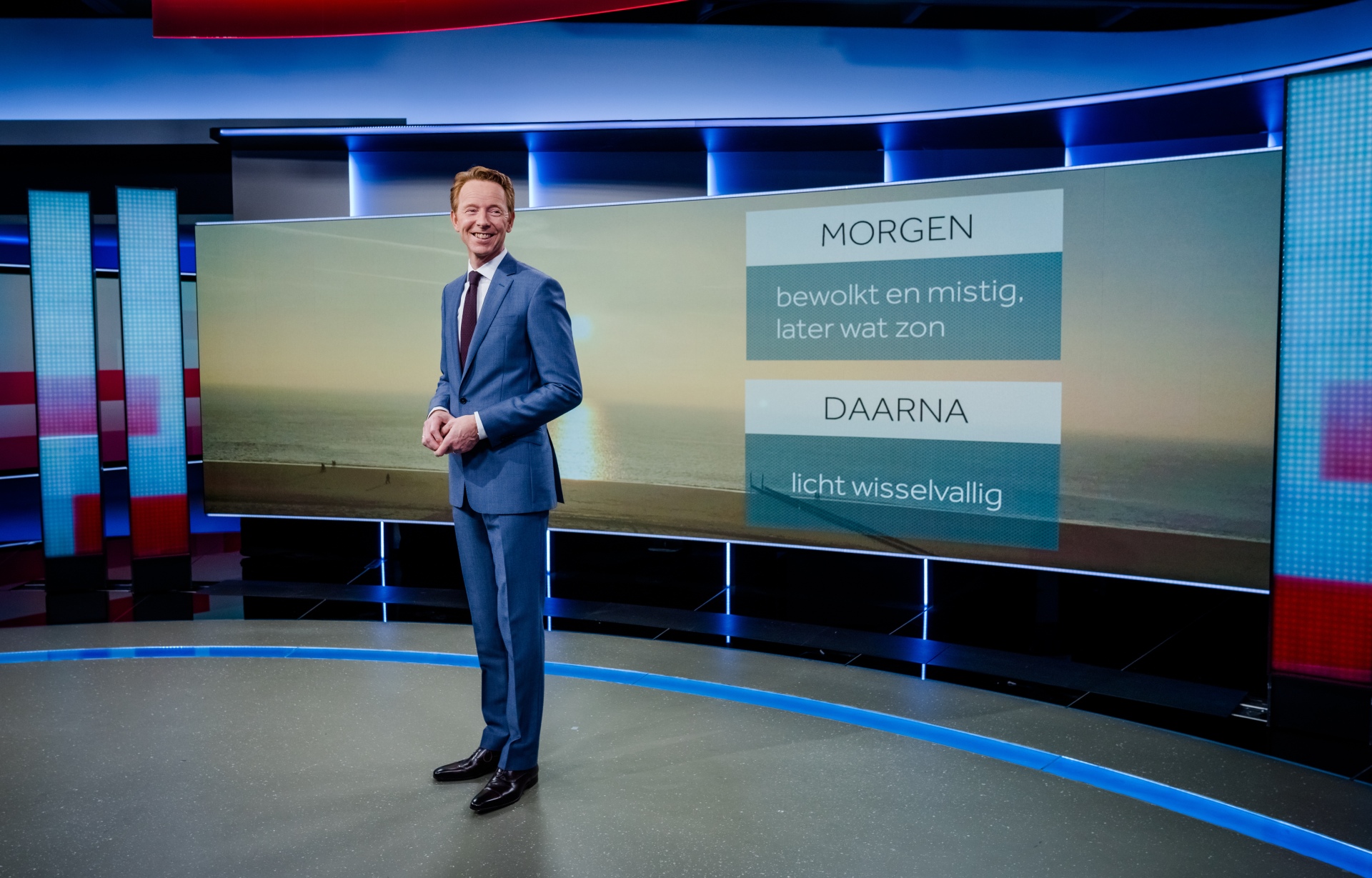Weatherman and honorary doctor Gerrit Hiemstra has a low tolerance for nonsense
Weatherman with passion, knowledge, and a clear message: that is how many Dutch people know Gerrit Hiemstra, long-term presenter of the weather forecast at the end of the NOS news. He still is fascinated by weather phenomena and is trying to convey the seriousness of climate change, even if he is using a different platform these days. On 24 May, he will receive an honorary doctorate from the University of Groningen for his services to bringing climate change and its serious consequences to people’s attention. The award ceremony will take place during the anniversary week .
Text: Thomas Vos

‘I genuinely have a low tolerance for nonsense with regard to climate change, when people are economical with the truth and present an incorrect reality. All this disinformation. I think it is bordering on criminal, to be be honest,’ says Hiemstra from his home, built using natural materials (lime and hemp), in the Frisian village of Balk. ‘That annoyance is, together with my enthusiasm for the scientific aspects of climate change, a significant motivation for me to create more awareness.’
Known from television
In his role as NOS weatherman, Gerrit Hiemstra (Drachten, 1961) became a well-known Dutchman. Before he entered the nation’s living rooms, he studied agricultural engineering in Wageningen, specializing in meteorology. After graduating, he started working in the weather room of the former weather firm Meteo Consult. From 1998 to 2023, he was one of the main presenters of the NOS weather report. In addition to his job as a presenter, Hiemstra continued to work for various weather firms. Currently, he is the owner of and consultant at a consultancy firm that develops innovative solutions in the fields of weather and climate. He is also the joint founder of Oarshûs, which facilitates climate-neutral construction using natural materials. His own home was the inspiration for this company.
Extremely nervous
The transition to television in 1998 went like this: ‘Through my work, I came into contact with the producer of the Agrarisch Journaal (Agricultural News) from the EO [television broadcaster] in the second half of the 1990s. He asked if we could take care of the weather report and that interested me. After having done that for over a year, a vacancy came up at the NOS in 1998. I sent in a demo tape and was invited for an audition. They thought ‘oh, he can already do this’, but I was, of course, extremely nervous. I was just improvising and they liked it. At first, I was mainly the regular stand-in, but as time went on I became the regular weatherman.’

Looking into the camera
This meant that Hiemstra worked two full days a week as a weatherman on radio and television, with an audience of millions: ‘In the beginning, I looked at others to see how it should be done, but over the years I developed my own style. This makes you more credible in the eyes of the viewer. Furthermore, the tension curve is short. You really must perform, because it is also over very quickly. After a few years, that becomes an automatism. For example, these days when I am being interviewed, I always tend to look into the camera, just as I did when presenting the weather. But that is exactly not the point with an interview, haha.’
Climate change
Hiemstra is known as an advocate of creating more awareness of climate change. Not only as the presenter of the weather, but also during lectures and workshops, for example: ‘At some point, I realized that this had become an important issue. I felt responsible for conveying this to the general public, because of the seriousness of the situation. At first, you do this somewhat unconsciously, you receive feedback, but there comes a point that you become aware of your role and of the public that you are able to reach. Then it becomes a conscious decision to give more attention to climate change.’
Repeat
Good communication is important to make sure the issue sinks in, emphasizes Hiemstra: ‘I often refer to good sources that explain the science of climate change in clear terms. For example, the IPCC website. Moreover, it is important to simply keep repeating the message. ‘Yes, it really is that serious,’ that idea. Continually emphasizing the essence of the issue... I think that that will work. And keeping it practical for the listener. I sometimes throw them off balance by saying, for example: ‘stop filling your car up with fuel’. The essence of the problem is easy to explain. The problem is that we burn petrol, diesel, kerosene, natural gas, and coal. That is a set list that I run through at presentations.’

Message to the scientific community
As the receiver of an honorary doctorate from the University of Groningen, Hiemstra has a message for the scientific community: ‘Some scientists explain something once and leave it at that. But that is not the way to convey your message well. I will also share this message with the University at the honorary doctorate award ceremony: let the world know what you are doing! And not only at scientific conferences using specialist language, but also at community events using ‘normal’ language. It really is not down to the intellectual capacities of the scientists, but it is a matter of doing, and a few tricks can get you a long way.’
Getting used to the idea
Finally, how does he feel about receiving an honorary doctorate? Hiemstra: ‘It took a little time to get used to the idea. What happened here? But it is a great honour to receive an honorary doctorate. Although I am not actively involved in the world of academia, I frequently communicate about the scientific aspects of climate change. That is one of the reasons why I am receiving this honorary doctorate. A wonderful recognition.’
Lecture with Gerrit Hiemstra om 24 May
The Faculty of Science and Engineering is giving Hiemstra the floor for a lecture titled 'Science, let's talk about it' in the morning of 24 May. The lecture will be free of charge but it is required to register. Registration is possible through the website of Studium Generale Groningen.
| Last modified: | 07 May 2024 3.50 p.m. |
More news
-
10 June 2024
Swarming around a skyscraper
Every two weeks, UG Makers puts the spotlight on a researcher who has created something tangible, ranging from homemade measuring equipment for academic research to small or larger products that can change our daily lives. That is how UG...
-
21 May 2024
Results of 2024 University elections
The votes have been counted and the results of the University elections are in!
